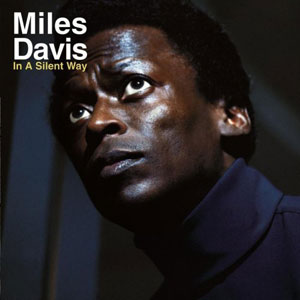
George and Ira Gershwin were well served by Davis and arranger Gil Evans when they recorded a version of Porgy & Bess (1958). It's a phenomenal record, lyrical, melodic and truly profound, it's also a demonstration of how jazz can fit perfectly into another musical frame. The string, flute solos, brass and woodwind which would usually perform the Gershwin's jazz inspired musical here serve as backing for Davis' astonishingly respectful post-hard bop trumpet and his current quartet (which included the masterful Cannonball Adderley). It's all wonderful stuff and, as with Milestones (and perhaps even more so), the fact that this was challenging orthodoxy in the most bold way is so brilliant that you don't even know it was happening when you listen to it - what you hear is simply some truly superb music played by astonishing talents.

Things are a bit more complex, and slightly less easy on the ear on 1965's ESP. Davis uses modal jazz as his template throughout and the improvisatory nature of the recording means that the meandering can leave me feeling a bit bewildered. Put simply there's too much shrill running up and down on Davis' trumpet. The band on ESP however are electrifying, particularly the mighty Herbie Hancock on piano. It's all pretty interesting and in it's sedate moments is absolutely lovely. in many ways I think set the basic framework for pretty much all modern jazz thereafter, but there is just a bit too much frantic experimentation for me to find it especially fun to listen to. In a Silent Way (1969) is another Davis album regarded as a masterpiece. One of his first electric albums, it has John McLaughlin on guitar and Chick Corea playing some slight but lovely Fender Rhodes, as well as Hancock's deft piano. It's a great record for sure, a delicate and fantastically structured album, with two lengthy pieces that work themselves out sinuously and smoothly. The whole record has a smoky, late night feel and it occasionally works itself into quite a funky groove. Yes, I said "funky groove". But it's true, honest. Again, it's one that people who can't dig jazz might even like.


Unlike Tutu (1986) which is terrible. Davis himself is on fine form but good lord the 1980's were a disaster in so many ways. Everything about Tutu apart from Davis' own playing is appalling. Horrible synth drums, terrible keyboards, nasty production and second rate tunes. It's absolutely dreadful. It would be great to hear what it would sound like if everything apart from the trumpet were removed but that's wishful thinking because this record is the way it is and that's a terrible shame.

Dawn of the Replicants were a band that my brother really liked for a while and he gave me their I Smell Voodoo EP (1998). I haven't listened to it in ages and can't really remember it, and the only song I can find on the internet from it is the lead song 'Mary Louise'. It's a nice, abstract little acoustic number with some slowly developing martial drumming and very Beach Boys background vocal phrasing and it all has a gentle angularity to it. It's very charming but it doesn't really knock me out.

4AD darlings Dead Can Dance had been a gloomy, gothy outfit who based their sound on an arty miserabilism, until the release of third album, Spleen and Ideal (1985). The sound on Spleen and Ideal is still self-consciously arty and dark but there's a whole raft of new ideas going on here. The band came to be identified with a sort of medievalism which is fair enough to an extent, there are a lot of chants and choirs and bells and so on. But there's also some remarkable cinematic arrangements and a minute attention to detail that means that the sort of religiosity of the sound is tempered by a thoroughly modern approach. It's all possibly a little silly in its po-faced earnestness but it is nonetheless quite an extraordinary listen and Dead Can Dance remain a unique proposition. In terms of creating an atmosphere of a kind of sullen dread, they were the past masters and you can almost imagine this stuff blasting out of corrupted cathedrals in the midst of the plague. See, that's the kind of nonsensical purple prose that the record evokes.

No comments:
Post a Comment